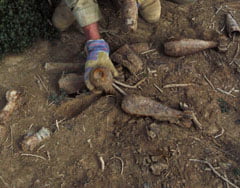Explosive remnants of war (ERWs) continue to cause casualties in Nepal five years since the conflict between the government and Maoist guerrillas ended. During the war, both sides readily employed landmines and improvised explosive devices; and battlefields were littered with unexploded ordinances. In a new article in the academic journal Injury Prevention [gated], a team of researchers from the Centers for Disease Control, United Nations Children’s Fund, and Informal Sector Service Center has published the results of the latest survey of 307 non-combatant victims of ERWs. Here it is, by the numbers:
75.8% of injuries were caused by homemade explosive devices. A majority of the injuries came from improvised explosive devices, most notably homemade grenades. This is rather unusual. In other conflict zones, landmines or unexploded ordinances were the primary causes of ERW casualties. The likely explanation is that these poorly made explosive devices failed to detonate during battles, becoming de facto landmines. The two deadliest types of homemade bombs were sutali bombs and socket bombs (also called pipe bombs). These weapons accounted for 30.9% and 28% of all ERW injuries reported in the study.
55% of victims were under the age of 18. Following patterns found in other former warzones, children are disproportionately at risk from injury by ERWs. The reason is likely that children are unaware of dangers from handling ERWs. Indeed 50% of injuries reported in the study were sustained “when victims were handling or otherwise tampering with (throwing, hitting, or burning) explosive devices” (Bilukha et al. 2011, 3).
38% of injuries occurred in the victim’s home. The researchers suggest one reason for the high number of injuries at home is because some people were “unafraid to handle explosives” and “willing to bring them to or store them in their homes” (Bilukha et al. 2011, 5). This is a clear sign that more ERW education is necessary.
These statistics reveal the dangers of living in a warzone, even five years after the major fighting ended. Long after rebels and soldiers return of their barracks, civilians living in conflict zones continue to exist under the threat of injury or death.
Source: Bilukha, Oleg O et al. 2011. “Injuries and deaths due to victim-activated improvised explosive devices, landmines and other explosive remnants of war in Nepal.” Injury Prevention: Journal of the International Society for Child and Adolescent Injury Prevention. http://www.ncbi.nlm.nih.gov/pubmed/21296800 (Accessed February 8, 2011).
Photo credit: DVIDS.
